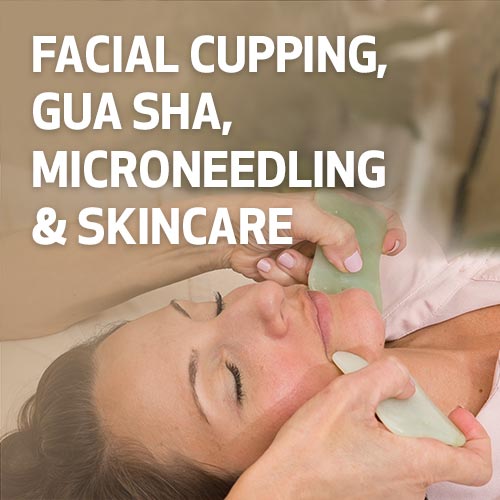The Use of Motor Points in Facial Acupuncture
Part of this article was taken from the Journal of Chinese Medicine, Number 110, February 2016: A Multifaceted Approach to the Acupuncture Treatment of Neuromuscular Facial Conditions by Michelle Gellis.
The use of motor points in the acupuncture treatment of musculoskeletal pain has become very popular in recent years. Less familiar to most practitioners is the use of facial motor points in the treatment of both neuromuscular conditions, and for cosmetic purposes. The use of motor points to treat pain dates back to the work of A.H. Bennett, M.D. in 1882.1 More recently, the work of several researchers has built the foundation for the growing use of motor points by acupuncturists to restore muscle function.
Motor points are located at the most electrically excitable part of the muscle where the motor nerve bundle is attached. More specifically, a motor point is defined as ‘the skin region where an innervated muscle is most accessible to percutaneous electrical excitation at the lowest intensity. This point, on the skin, generally lies over the neurovascular hilus of the muscle and the muscle’s band or zone of innervation.’3 When a muscle is in spasm, it has lost its ability to function properly. Correct needle insertion into the muscle’s motor point will cause it to ‘jump’, which resets the muscle to normal function. When a muscle is in flaccid state, it has also lost its ability to fire properly. By stimulating the motor point, the flaccid muscle can return to a functional state. Motor points are not the same as trigger points. Trigger points are tender points in the muscle that most people refer to as ‘knots’, which can refer pain to other parts of the body.4 Motor points tend to contain a larger concentration of nerve endings than other areas in the muscle and are more electrically excitable.5 They are neuromuscular junctions and are anatomically specific
Facial motor points are unique in several ways:
- Facial muscles are thinner than most of the muscles in our body therefore require a different needling technique.
- Most muscles in our bodies attach to bones or other muscles, however facial muscles attach to our skin, giving us the ability to make facial expressions. Therefore, they can be used to rejuvenate the skin by relaxing tight muscle and wrinkles.
- Unlike the motor points on the body, there are no huatuojiaji points that correspond to the motor points on the face.
Many facial motor points correspond with traditionally documented acupuncture points, such as Yangbai GB-14 for the frontalis muscle and Quanliao SI-18 for the zygomaticus major muscle.7 They are often located in the belly of the muscle. Motor points used in treating facial conditions are all innervated by the seventh cranial nerve, except those of the masseter and temporalis muscles. To determine which motor points to needle, one must identify which muscle(s) are affected. For example, if a patient cannot smile, there are four main muscles that may be affected. The zygomaticus major (which draws the angle of the mouth upward and outward), zygomaticus minor (elevates the upper lip), the levator labii superioris (elevates the upper corner of mouth) and the risorius (retracts the angle of the mouth laterally). Once the affected muscles have been identified, the corresponding motor points can be treated. Motor point needling is effective for many conditions involving paralysis. Needling a motor point helps a muscle to recover its length. Readers should note that learning to locate and needle facial motor points effectively typically requires special training, usually in a hands-on environment. Arnica gel is usually applied to the skin to prevent bruising, and a 0.16-millimeter gauge needle is inserted into the belly of the muscle and vigorously lifted and thrusted until the muscle jumps. If performed incorrectly, stimulation of a motor point can cause damage to the facial nerves. Proper screening for contraindications such as neuropathy or concurrent use of anticoagulants, or thrombocytopenia or lymphedema is essential.
Other Courses By This Teacher
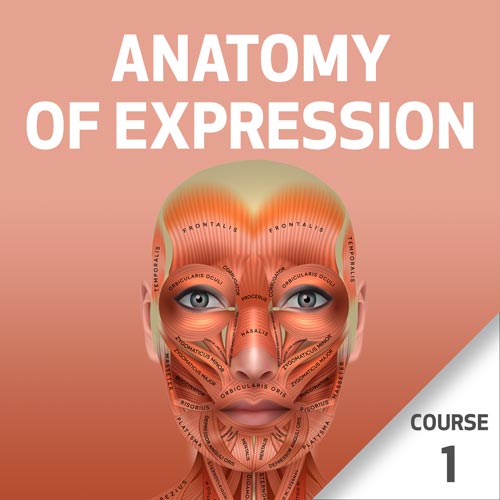




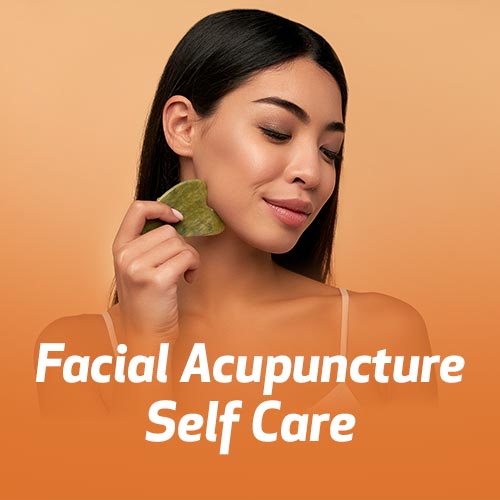

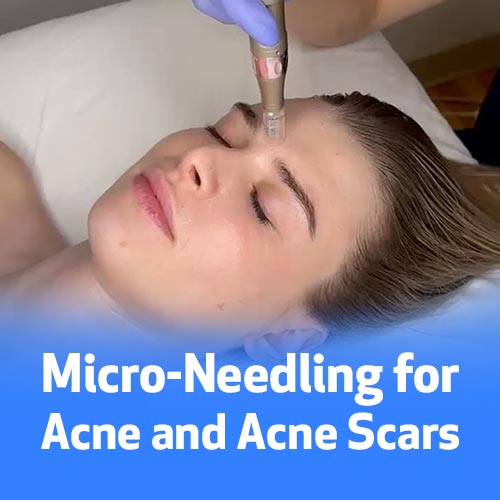

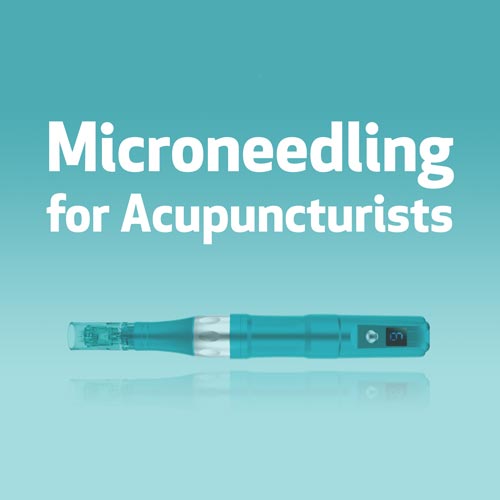

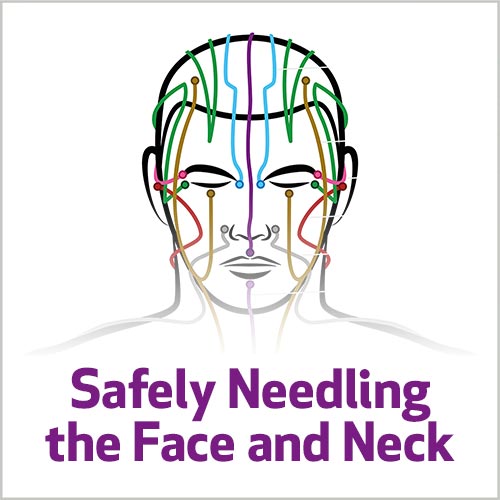

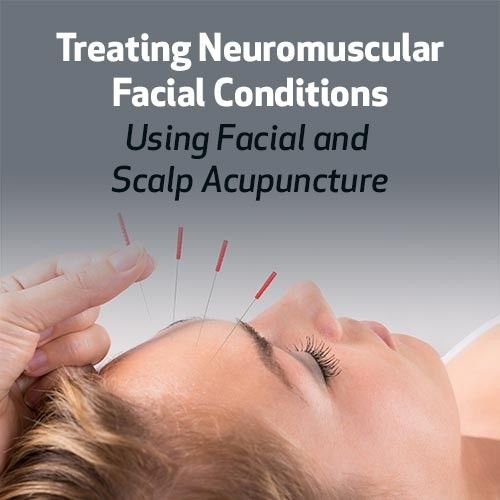

Overview
Delve into the world of our emotions, expressions, and how they manifest on a body/mind/spirit level to shape the landscape of our face. We will look at the relationship between our facial expressions and the relationship to the Zang/Fu. treatment modalities will be taught.
This webinar includes 3.25 hours of instruction that will cover:
(1) Facial anatomy
(2) Muscles involved in facial expression
(3) The connection between our emotions, expression/repression and health
(4) Treatment
Learning Objectives
- Learn the internal/ external manifestations of emotions
- Learn which points can be used to treat the muscles
- Learn facial muscular anatomy
Your Teacher

Michelle Gellis
Michelle Gellis is a Licensed and Board Certified Acupuncture Physician. She has been a Faculty Member and Clinic Supervisor at the Maryland University of Integrative Health since 2004. Ms Gellis holds the distinction of being one of the very few acupuncturists in the US certified to teach Facial Acupuncture certification classes on an international level to other acupuncturists.
Categories
Tags
Overview
This webinar is part two of a 2-part class which ties in the anatomy of the face and the connections between the emotions, facial expressions and the channels. It covers the spirit of the points from a five element perspective and why clearing energetic blocks is important to treatments. This class will provide a deeper understanding of the connection between the facial expressions and the health of our body. Chinese face reading is taught by Dr. Cameron Bishop. The knowledge gained will enhance the students ability to design effective treatments.
Learning Objectives
- Learn treatment protocols.
- Learn an overview of chinese face reading.
- Recognize and learn protocols to treat energetic blocks.
- Learn spirit of the points on the face.
Your Teachers

Michelle Gellis
Michelle Gellis is a Licensed and Board Certified Acupuncture Physician. She has been a Faculty Member and Clinic Supervisor at the Maryland University of Integrative Health since 2004. Ms Gellis holds the distinction of being one of the very few acupuncturists in the US certified to teach Facial Acupuncture certification classes on an international level to other acupuncturists.

Cameron Bishop
Dr Cameron Bishop lived, worked and studied in Japan for four years. He specializes in Japanese Meridian therapy, Women's Health and Pain Management. He has been practicing over 25 years in South Florida. He has extensive teaching and clinical experience.
Category
Tags
Facial Acupuncture Self Care
Self-care Facial Acupuncture, Cupping, Gua Sha & microneedling for acupuncturists
with Michelle Gellis
See In StoreOverview
This course provides an in-depth tutorial on facial acupuncture, facial cupping, facial Gua Sha and micro needling that acupuncturists can implement in their own self-care. Diagnosis, contraindications, and protocols are the main focus of the class with additional skincare and lifestyle tips. Michelle Gellis, Acupuncture physician utilizes her 20 years of clinical and personal experience to guide the practitioner through treatment planning, execution and aftercare.
Learning Objectives
- Understand protocols for facial cupping self-care
- Understand protocols for facial gua sha self-care
- Understand protocols for facial acupuncture self-care
- Understand protocols for microneedling
Your Teacher

Michelle Gellis
Michelle Gellis is a Licensed and Board Certified Acupuncture Physician. She has been a Faculty Member and Clinic Supervisor at the Maryland University of Integrative Health since 2004. Ms Gellis holds the distinction of being one of the very few acupuncturists in the US certified to teach Facial Acupuncture certification classes on an international level to other acupuncturists.
Categories
Tags
Overview
Discover how to safely and effectively use Micro-Needling to treat acne and acne scars in this detailed and engaging course designed specifically for acupuncturists. This class provides a deep dive into the science and application of micro-needling, focusing on its benefits for improving skin texture, reducing acne scars, and supporting overall skin health.
You’ll learn about the anatomy and physiology of the skin, how Micro-Needling stimulates collagen production, and the role of Traditional Chinese Medicine in enhancing outcomes. Through step-by-step instruction, this course covers essential safety protocols, contraindications, needle depth guidelines, tailored for treating acne and scarring.
Whether you’re new to Micro-Needling or looking to refine your skills, this class provides the tools and knowledge you need to integrate this highly effective treatment into your practice. Equip yourself to meet patient demand and deliver transformative results while maintaining the highest standards of care. Earn CEUs and expand your expertise with this dynamic and practical course.
Learning Objectives
- Understand the anatomy and physiology of the skin and the mechanisms by which Micro-Needling stimulates collagen production and improves skin texture.
- Integrate Micro-Needling with Traditional Chinese Medicine principles to enhance patient outcomes holistically.
- Be able to identify contraindications, implement safety protocols, and troubleshoot common challenges in Micro-Needling treatments.
- Learn how to safely and effectively perform Micro-Needling treatments for acne and acne scars, including proper needle depth and protocols.
Your Teacher

Michelle Gellis
Michelle Gellis is a Licensed and Board Certified Acupuncture Physician. She has been a Faculty Member and Clinic Supervisor at the Maryland University of Integrative Health since 2004. Ms Gellis holds the distinction of being one of the very few acupuncturists in the US certified to teach Facial Acupuncture certification classes on an international level to other acupuncturists.
Categories
Tags
Overview
This course is designed to train Acupuncturists in the proper use of a microneedle pen. Students will be taught the theory and protocols for microneedling and introduced to the equipment, and products used to best support the procedure.
Learning Objectives
- Learn which products are most effective for treating the face
- Learn precautions and contraindications to microneedling
- Learn how to choose a device
- Learn how to use a microneedling device
Your Teacher

Michelle Gellis
Michelle Gellis is a Licensed and Board Certified Acupuncture Physician. She has been a Faculty Member and Clinic Supervisor at the Maryland University of Integrative Health since 2004. Ms Gellis holds the distinction of being one of the very few acupuncturists in the US certified to teach Facial Acupuncture certification classes on an international level to other acupuncturists.
Categories
Tags
Overview
The purpose of this course is to familiarize practitioners with protocols for needling the face and neck safely in order to reduce trauma to the skin and underlying structures. Anatomy, point location contraindications and precautions are reviewed. This course will
* familiarize practitioners with protocols for needling the face and neck safely
* review Facial Anatomy
* introduce tools used for safely needling the face
* review contraindications and precautions
Learning Objectives
- Review facial anatomy
- Introduce tools used for safely needling the face
- Familiarize practitioners potential concerns when needling the face and neck
- Review contraindications and precautions
Your Teacher

Michelle Gellis
Michelle Gellis is a Licensed and Board Certified Acupuncture Physician. She has been a Faculty Member and Clinic Supervisor at the Maryland University of Integrative Health since 2004. Ms Gellis holds the distinction of being one of the very few acupuncturists in the US certified to teach Facial Acupuncture certification classes on an international level to other acupuncturists.
Categories
Tags
Treating Neuromuscular Facial Conditions
Using Facial and Scalp Acupuncture
with Michelle Gellis
See In StoreOverview
This course provides needling protocols such as intramuscular needling of the face, scalp acupuncture, facial cupping, auricular points, and motor points.
The knowledge gained in this acupuncture course will be used in the second part of the webinar which covers how to treat various diseases and disorders which affect the proper functioning of facial muscles and nerve such as Bell's Palsy, Ptosis, Shingles, TMJ, Stroke, Trigeminal Neuralgia, MS and others. It also provides assessment tools and needling protocols to treat various diseases and disorders which affect the proper functioning of facial muscles and nerves such as: Bell's Palsy, Ptosis, Shingles, TMJ, Stroke, Trigeminal Neuralgia, MS and others.
The second half focuses on diagnosis and treatment. The student will learn to Identify different TCM patterns, which affect the facial muscles and nerves.
Learn which modality is best suited to treat different conditions affecting the face. Learn how to effectively plan treatments for various conditions affecting the face.
Learning Objectives
- Learn how to assess and diagnose neuromuscular facial conditions.
- Be able to identify which modality is best suited to treat different conditions affecting the face, including screening for contraindications.
- Learn facial motor points
- Learn facial cupping
- Perform treatment planning for neuromuscular facial conditions.
- Learn Intramuscular needling of the face
- Learn scalp acupuncture
Your Teacher

Michelle Gellis
Michelle Gellis is a Licensed and Board Certified Acupuncture Physician. She has been a Faculty Member and Clinic Supervisor at the Maryland University of Integrative Health since 2004. Ms Gellis holds the distinction of being one of the very few acupuncturists in the US certified to teach Facial Acupuncture certification classes on an international level to other acupuncturists.
